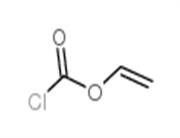Description
Thaumatin is a mixture of intensely sweet-tasting proteins extracted from the fruit of a West African plant, Thaumatococcus daniellii. The two major sweet-tasting proteins, thaumatin I and II (TI and TIl), were isolated by Van der WeI and his group at Unilever in 1972. Thaumatin is marketed in the UK by Tate & Lyle pIc as Talln, although the fruit of the plant has been used for centuries by the West Africans as a source of sweetness. It is also sold in Japan. Because of problems with stability, taste profile and compatibility, thaumatin is used primarily as a flavour enhancer, at levels below the sweet-taste threshold.
Chemical Properties
Thaumatin is a mixture of sweet proteins occurring in the arils of the fruits of the African plant Thaumatococcus daniellii. Thaumatins I and II are the main components, but four more thaumatin molecules are known. The proteins may be extracted with water. Thaumatin is about 2,000–2,500 times sweeter than sucrose but has a lingering sweetness. In addition to its sweet taste, it has flavor-enhancing properties. It is freely soluble in water and of fairly good stability.
In Europe, thaumatin is approved as E 957 for use as a sweetener. It is also approved in a variety of other countries, but in the United States, GRAS as a flavor enhancer only.
Chemical Properties
Thaumatin occurs as a pale-brown colored, odorless, hygroscopic powder with an intensely sweet taste.
Chemical Properties
Thaumatin is odorless but has an intensly sweet taste. Also see Thaumatin b-recombinant.
Occurrence
Reported found in the fruits of Thaumatococcus daniellii.
Uses
Potential low-calorie sweetener.
Uses
Thaumatin is a flavor enhancer that is a protein which is approxi- mately 3,000 times as sweet as sucrose. the onset of sweetness may take several seconds and can be affected by heat. it is used in chew- ing gum.
Uses
As a sweetener, thaumatin is used in beverages and desserts, but its applications are limited because of its liquorice taste and delayed sweetness (Gelardi, 1987). In practice, therefore, thaumatin is more commonly used as a partial sweetener, mixed with other more rapidly tasting sweeteners (Higginbotham, 1986).
Despite its limitations as a sweetener, thaumatin is a powerful flavour enhancer, and magnifies spearmint, cinnamon, wintergreen and peppermint by up to ten times. This flavour potentiating characteristic, together with the lingering sweet taste, can be beneficially used for products such as toothpaste, mouthwash and chewing gum, and for enhancing the masking flavours in medicines. Thaumatin also boosts the low sweetness of bulk sweeteners added to sugarless gums, without adding calories or cariogenicity (Higginbotham, 1983, 1986).
Thaumatin has been used in Japan since 1979 in a variety of products, where it has been shown to enhance and improve the flavour of coffee and of milk products. It is thus used in coffee-flavoured products, ice-cream, iced milk drinks-on-sticks, and spray-dried milk powders. It also enhances savoury flavours (Higginbotham et al., 1981; Higginbotham, 1986), and combinations of thaumatin with nucleotides, spices and/or other flavours may be used to replace monosodium glutamate, an ingredient of current concern with regard to safety (Anon, 1987b).
Production Methods
Thaumatin is a naturally occurring intense sweetener isolated from the fruit of the African plant Thaumatococcus daniellii (Benth).
Commercially, thaumatin is produced by aqueous extraction under reduced pH conditions followed by other physical processes such as reverse osmosis.
Preparation
Isolated from the fruits of Thaumatococcus daniellii.
Health Hazard
Thaumatin is the only natural high-intensity sweetener, and products containing it do not require to be labelled 'artificially sweetened'. It has a low calorific value and is non-cariogenic (Higginbotham, 1986). The report of the Joint F AOfWHO Expert Committee (1987) recorded no mutagenic, teratogenic or allergenic effects of thaumatin, and concluded that the lack of toxicity, together with its ready digestion to normal food components, indicated that its only dietary effect was to make an insignificant contribution to the normal protein intake.
Pharmaceutical Applications
Thaumatin is a naturally occurring intense sweetening agent approximately 2000–3000 times as sweet as sucrose. It has a delayed-onset taste profile and long (up to one hour) licorice-like aftertaste. It is used extensively in food applications as a sweetening agent and flavor enhancer, and has potential for use in pharmaceutical applications such as oral suspensions. The typical level used in foods is 0.5–3 ppm, although higher levels are used in certain applications such as chewing gum. Synergistic effects with other intense sweeteners such as acesulfame K and saccharin occur. The extensive disulfide crosslinking within thaumatin maintains the tertiary structure of the polypeptide: cleavage of just one disulfide bridge has been shown to result in the loss of the sweet taste of thaumatin.
Safety
Thaumatin is accepted for use in food products either as a sweetener or as a flavor modifier in a number of areas including Europe and Australia. It is also used in oral hygiene products such as mouthwashes and toothpastes, and has been proposed for use in oral pharmaceutical formulations. Thaumatin is generally regarded as a relatively nontoxic and nonirritant material when used as an excipient. In Europe, because of its lack of toxicity, an ADI has been set of ‘not specified’.
LD50 (mouse, oral): >20 g/kg
LD50 (rat, oral): >20 g/kg
Regulatory Status
GRAS listed. Accepted for use as a food additive in Europe. Included in nonparenteral medicines licensed in the UK.
Regulations
Thaumatin has been permitted as a natural food in Japan since June 1979. It was awarded GRAS status for use in chewing gum in the USA in October 1984 and, in the UK, was permitted for use in foods, drinks and dietary products, excluding baby foods, by the Sweeteners in Foods Regulations in 1983. The Joint F AOjWHO Expert Committee declared an ADI 'not specified' for thaumatin in 1985 (Joint F AOjWHO, 1987). Approval has also been gained in many countries world wide for use of thaumatin as a sweetener and flavour enhancer, particularly in chewing gum. These include Australia, Belgium, Spain, Switzerland, Mexico and Denmark (Higginbotham, 1986).

 China
China






